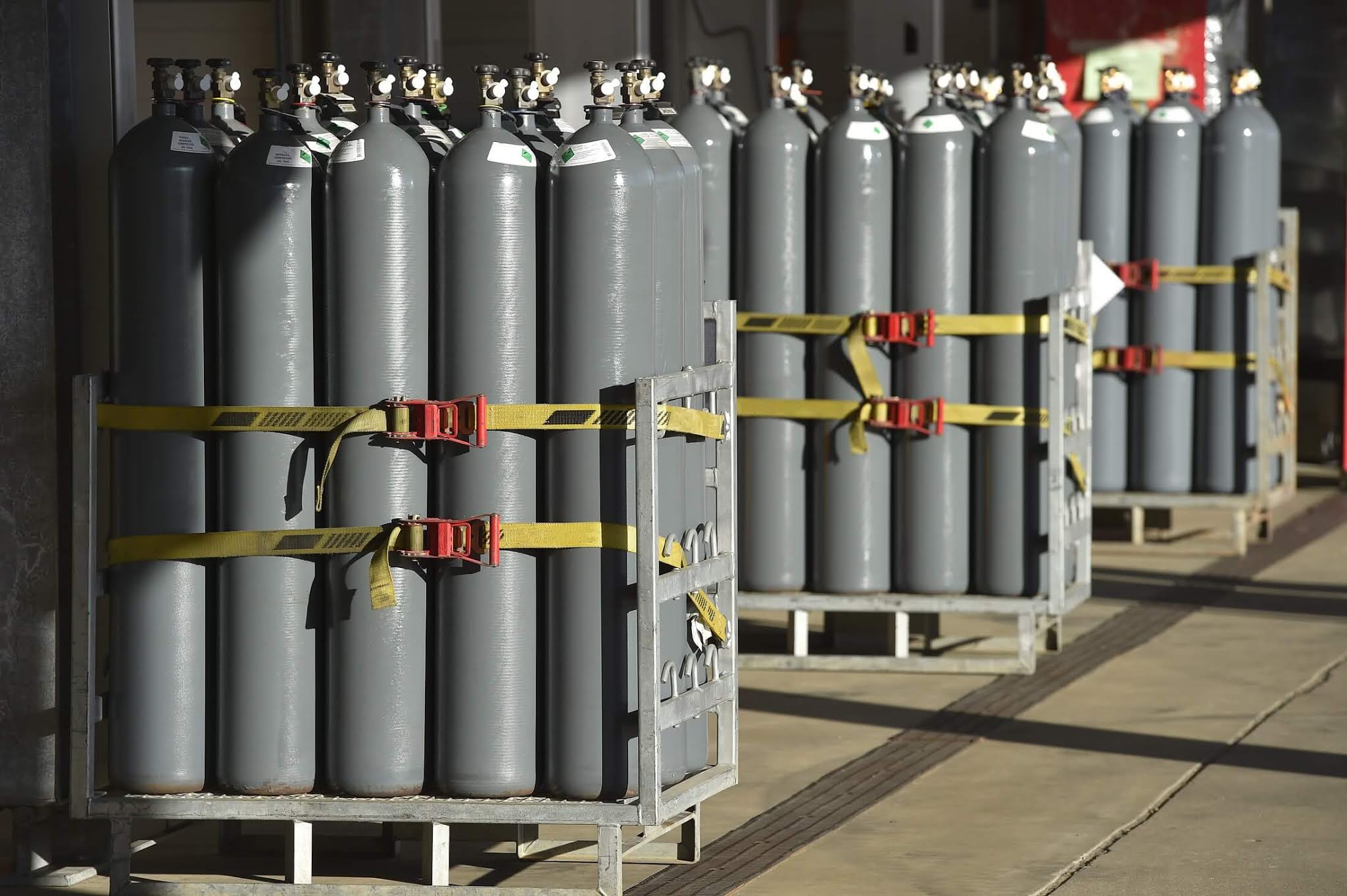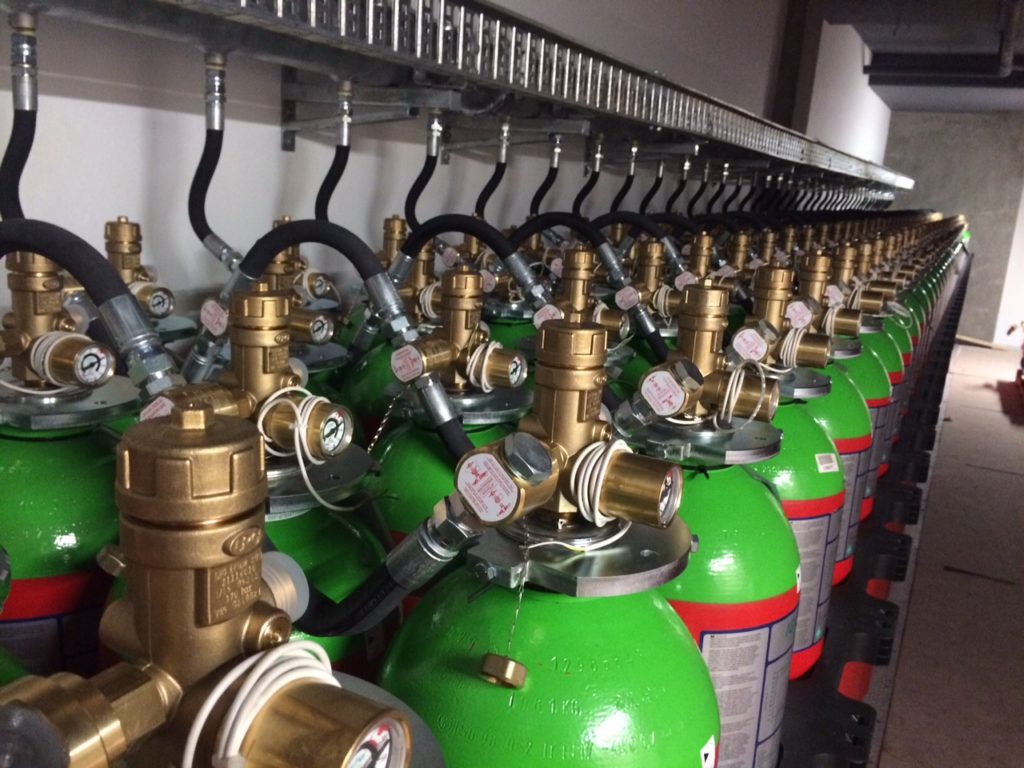General Precautions for Handling Industrial Gas Cylinders
Compressed gas cylinders can be extremely dangerous if misused or misused. Industrial Gas Cylinders can present a variety of hazards due to their pressure and/or contents.
Depending on the particular gas, there is the potential for both mechanical and chemical hazards as well as exposure. Probably used gases:
- Flammable or combustible
- Corrosive
- Explosives
- Poisonous
- Inactive
- Acidic
- Reactive
- Or a combination of threats
Without proper use and care, gas cylinders can explode, killing workers and destroying equipment. Cylinder flying projectiles can also occur if the cylinder valve is damaged or broken. Regulators can become bullets that tear workers apart if safety precautions are not taken.
Careful procedures are necessary for handling the various compressed gases, cylinders, regulators or valves used to control gas flow, and the piping used to limit gases during flow.
Industrial Gas Cylinders Safety Guidelines
A. Identity "Always Read the Label"
- The contents of any high pressure gas cylinder must be clearly identified. The gas identification must be stenciled or stamped on the cylinder or label. Commercially available three-part tag systems can be used for identification and inventory.
- Any Industrial Gas Cylinders must not be accepted for use that does not clearly identify its contents by name. If the labeling on the cylinder becomes unclear the cylinder should be marked "Unknown Content" and returned to the supplier.
- Do not depend on the color of the cylinder for identification. Colour-coding is not reliable as cylinder colors may vary with the supplier. Also, never rely on labels on caps as they are interchangeable.
- All gas lines going from a compressed gas supply must be clearly labeled to identify the gas and service area. Labels must be coded to differentiate hazardous gases such as flammable, toxic or corrosive substances. Signs should be posted in areas where flammable compressed gases are stored or used, substance identification and appropriate precautions.
B. Handling and Use
1. The Following Precautions Should Be Taken Before Using The Cylinders For The First Time:
- Make sure the cylinder is equipped with the perfectly regulator.
- Oversee the regulator and cylinder valves for grease, oil, dirt and solvent. Never use grease or oil to lubricate regulators or cylinder valves as they can cause explosion.
- The cylinder should be positioned so that the valve handle at the top is easily accessible.
- When using toxic or irritating gas, the valve should be opened only when the cylinder is in a working fume hood.
- Use the wrench or tool provided by the Gas Cylinders Suppliers to open or close the valve only. Pliers should never be used to open the cylinder valve. Some regulators require washers; this must be checked before the regulator is fitted.
- Fire extinguishers should be readily available when flammable materials may be
- Exposure to welding or cutting operations using compressed cylinder gases.
2. Cylinder Storage
- The gas cylinder must be kept secure at all times to prevent tipping.
- Use appropriate materials, such as chain, plastic coated wire cable, commercial strap, etc. safe cylinder.
- Gas cylinders cannot be stored in public hallways or other unsafe areas
- Cylinders should be separated into hazardous classes during storage. The oxidizer (oxygen) should be separated from the flammable gases, and the empty cylinders should be separated from the filled cylinders.
- Store away from direct sunlight and away from sources of heat and ignition; the temperature should not exceed 125 F.
- Always put valve protector on gas cylinder when cylinders are not connected for use.
- High Pressure Gas Cylinders must be protected from damage. Do not store cylinders near lifts or gangways or in places where heavy objects may collide or fall on them.
- Cylinders should be placed where they are protected from the ground to prevent rusting. The cylinders should be protected from tampering by unauthorized persons.
- Storage areas should be well ventilated, cool, dry and free from corrosive materials.
3. Moving Cylinder
- Never drag, slide or roll the cylinder; Use a cylinder cart or basket.
- Always keep the protective caps covering the valve when transporting the cylinder.
- Never move the cylinder with the regulator.
- Make sure the cylinder is secure before moving the car.
- Do not drop the High Pressure Gas Cylinders or hit them hard against each other or on other surfaces.
- Does not use the valve cover to lift the cylinder; they can be damaged and unattached. If the cylinder is dropped on a hard surface it can cause an explosion.
4. Use and Operation
- Only a properly trained person should handle High Pressure Gas Cylinders.
- Before opening the cylinder valve, unscrew the regulator's pressure adjustment screw to release the spring force.
- Open the valve slowly and only with the appropriate regulator. Stand with the cylinder between you and the regulator (facing the cylinder valve outlet) when opening the cylinder valve.
- Acetylene or other flammable gas cylinder valves should be opened no more than 1⁄2 turn of the spindle, and preferably no more than 3⁄4 of a turn. This minimizes the risk of explosion and allows the cylinder valve to close quickly by cutting off gas flow.
- Never heat the cylinder to increase the gas pressure (this may cause the supplier's built-in safety mechanism to fail).
- Keep the Industrial Gas Cylinders away from all electrical circuits, flame and sparks.
- Do not leave the valve open when the appliance is not in use, even when empty; air and moisture Can spill through an open valve, causing contamination and corrosion within the cylinder.
- Do not refill a cylinder; Mixing of residual gases in a confined area can result in a dangerous reaction.
5. Cylinder Leaks
- If the cylinder contains flammable, inert or oxidizing gas, remove it to a separate area away from potential ignition sources. Leave it in isolation until the gas is discharged, making sure the proper warning is posted.
- If the gas is corrosive, remove the cylinder to a separate, well-ventilated area. The leaking gas stream should be directed into a suitable neutralizing material.
- For toxic material, the cylinder should be removed to a separate, well-ventilated area, but only if this is possible while maintaining personal safety. It may be necessary to clear the facility.
- If the leak is at the junction of the cylinder valve and the cylinder, do not attempt to fix it. Contact the supplier and ask for feedback instructions.
- Never use a flame to detect a gas leak. Use soapy water.
6. When The Cylinder Is No Longer Needed, The Following Steps Should Be Taken:
- Do not empty the cylinder completely; Always release some residual pressure.
- If the Industrial Gas Cylinders is empty, replace the cap and remove it in the empty cylinder storage area.
- Label all empty cylinders so that everyone can know their position. Empty cylinders may be marked with chalk/marker as "MT and date".
- Handle empty cylinders as carefully as filled cylinders; Residual pressure can be dangerous.
- Never refill the cylinder. It requires special tools and techniques
- Never mix in gas cylinder. The next person who is attracted to it may inadvertently cause an explosion.




There are many blogs I have read but when I read Your Blogs I have found such useful information, fresh content with such amazing editing everything is superb in your blog, Thank you so much for sharing this useful and informative information about Diving and industrial gases Manufactureres with us.
ReplyDelete